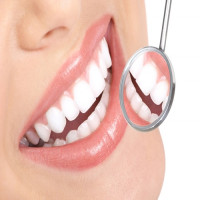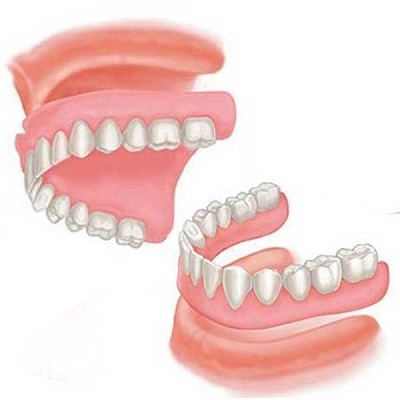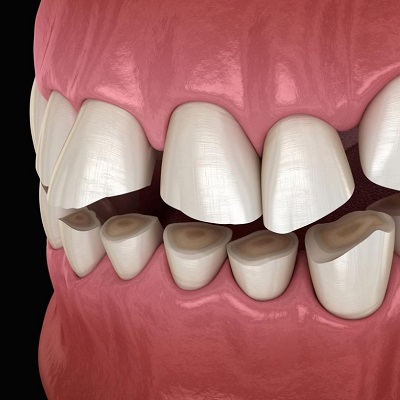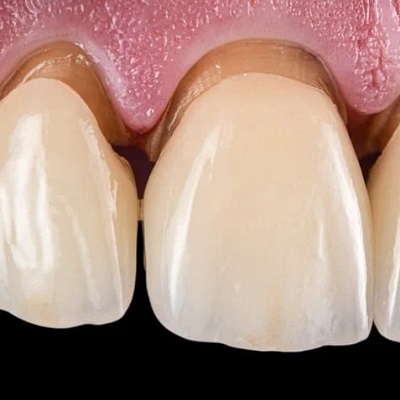The Latest Innovations in General Dentistry
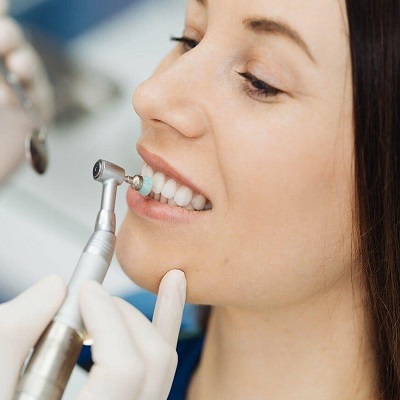
Strong 8k brings an ultra-HD IPTV experience to your living room and your pocket.
General Dentistry continues to evolve with advancements in technology and techniques that enhance patient care, improve outcomes, and make dental visits more comfortable. The latest innovations in general dentistry are transforming how dental professionals diagnose, treat, and manage oral health. Here’s a look at some of the most exciting developments in the field.
1. Digital Impressions and Scanning:
Traditional dental impressions, which involve a messy, uncomfortable process with impression material, are being replaced by digital impressions.
Intraoral Scanners: These handheld devices capture detailed images of the teeth and gums, creating a precise 3D model. Digital impressions are quicker, more comfortable, and more accurate than traditional methods. They enhance the fit of crowns, bridges, and aligners, reducing the need for adjustments.
Benefits: Digital impressions eliminate the need for physical molds, improve patient comfort, and allow for faster and more accurate treatment planning. They also enable easy sharing of data with dental labs and specialists.
2. CAD/CAM Technology:
Computer-Aided Design (CAD) and Computer-Aided Manufacturing (CAM) technology are revolutionizing the creation of dental restorations.
Same-Day Crowns: CAD/CAM systems allow for the design and fabrication of dental crowns, veneers, and bridges in a single visit. After scanning and designing the restoration, the system mills it from a block of ceramic or resin, which is then placed immediately.
Benefits: This technology reduces the time needed for restorations and eliminates the need for temporary crowns. It also ensures a precise fit and high-quality results.
3. 3D Imaging and Cone Beam CT:
Three-dimensional imaging technologies provide a more comprehensive view of a patient’s oral and maxillofacial structures.
Cone Beam Computed Tomography (CBCT): CBCT scans offer detailed 3D images of the teeth, bones, and soft tissues. This imaging technique is especially useful for diagnosing complex cases, such as impacted teeth, bone deficiencies, and planning for implants.
Benefits: CBCT provides accurate and detailed images that enhance diagnostic capabilities, treatment planning, and the placement of dental implants. It also improves the ability to visualize the spatial relationships of dental structures.
4. Laser Dentistry:
Lasers are increasingly used in various dental procedures due to their precision and minimal invasiveness.
Soft Tissue Lasers: These are used for procedures such as gum contouring, treating gum disease, and performing frenectomies. Soft tissue lasers promote faster healing and reduce discomfort compared to traditional methods.
Benefits: Laser dentistry minimizes bleeding, reduces the risk of infection, and accelerates the healing process. It also often eliminates the need for stitches and reduces patient anxiety.
5. Tele-dentistry:
Tele-dentistry involves using digital communication tools to provide dental care remotely.
Virtual Consultations: Patients can consult with their dentist via video calls or digital platforms. This is particularly useful for follow-up appointments, initial consultations, and discussing treatment plans.
Remote Monitoring: Some practices use digital tools to monitor patients’ progress, such as tracking the movement of orthodontic aligners or assessing the healing of post-surgical sites.
Benefits: Tele-dentistry offers convenience, reduces the need for in-person visits, and provides access to care for patients in remote or underserved areas. It also helps in managing routine consultations and follow-ups efficiently.
6. Minimally Invasive Techniques:
Minimally invasive dentistry focuses on preserving as much of the natural tooth structure as possible while treating dental issues.
Air Abrasion: This technique uses a stream of air mixed with abrasive particles to remove decayed tooth material without the need for a drill. It’s less invasive and often preferred for small cavities.
Resin Infiltration: This technique involves applying a resin to fill and stabilize early cavities, preventing further decay without drilling. It’s especially useful for treating non-cavitated carious lesions.
Benefits: Minimally invasive techniques reduce patient discomfort, preserve more natural tooth structure, and often result in faster recovery times.
7. Enhanced Diagnostic Tools:
Advancements in diagnostic tools are improving the accuracy of disease detection and treatment planning.
Intraoral Cameras: These small, high-resolution cameras capture detailed images of the inside of the mouth, allowing both the dentist and patient to view and understand oral health issues clearly.
Digital Radiography: Digital X-rays offer faster image capture with less radiation exposure compared to traditional X-rays. They provide high-resolution images that enhance diagnostic accuracy.
Benefits: Enhanced diagnostic tools improve the precision of diagnoses, facilitate better communication between dentist and patient, and enable more effective treatment planning.
8. Smart Toothbrushes and Home Care Devices:
Innovations in home dental care are making it easier for patients to maintain good oral hygiene.
Smart Toothbrushes: These brushes connect to smartphone apps and provide real-time feedback on brushing techniques, duration, and pressure. Some models offer personalized recommendations and reminders.
Water Flossers: Advanced water flossers use pulsating streams of water to clean between teeth and along the gumline, making flossing easier and more effective.
Benefits: Smart toothbrushes and home care devices help patients improve their oral hygiene routines, leading to better overall oral health and fewer dental issues.
9. Biocompatible Materials:
The development of new biocompatible materials is enhancing the safety and effectiveness of dental restorations.
Zirconia Crowns: Zirconia is a strong, tooth-colored material used for crowns and bridges. It’s highly durable and offers a natural appearance, making it a popular choice for both anterior and posterior restorations.
Composite Resins: Modern composite resins are used for fillings, veneers, and bonding. They offer improved strength, aesthetics, and durability compared to earlier materials.
Benefits: Biocompatible materials provide durable, aesthetically pleasing results while minimizing the risk of allergic reactions or adverse interactions with the body.
10. Customized Orthodontic Solutions:
Orthodontics has seen significant advancements, particularly in personalized treatment approaches.
Clear Aligners: Companies like Invisalign offer customized clear aligners that gradually straighten teeth without the need for traditional metal braces. They are removable, comfortable, and virtually invisible.
3D Treatment Planning: Orthodontists use 3D imaging and computer software to create precise treatment plans and visualize the expected outcomes. This enhances the accuracy of aligner fittings and treatment results.
Benefits: Customized orthodontic solutions provide a more discreet, comfortable, and effective way to straighten teeth and improve dental alignment.
Conclusion:
The latest innovations in general dentistry are transforming the way dental care is delivered, making treatments more effective, comfortable, and patient-friendly. From digital impressions and CAD/CAM technology to laser dentistry and tele-dentistry, these advancements are enhancing both the quality of care and the patient experience. By embracing these cutting-edge technologies, general dentistry continues to improve oral health outcomes and help patients achieve healthier, more beautiful smiles.
FAQs:
1. Are digital impressions as accurate as traditional impressions?
Yes, digital impressions are highly accurate and often more precise than traditional impressions. They provide detailed 3D models of the teeth and gums, which improve the fit of dental restorations.
2. How do same-day crowns compare to traditional crowns?
Same-day crowns created with CAD/CAM technology offer a quicker solution compared to traditional crowns, which require multiple visits. They are made from high-quality materials and provide a precise fit.
3. What are the benefits of laser dentistry?
Laser dentistry reduces discomfort, minimizes bleeding, accelerates healing, and often eliminates the need for stitches. It also provides greater precision for various dental procedures.
4. How does tele-dentistry work?
Tele-dentistry uses digital communication tools to provide remote consultations, follow-ups, and treatment planning. It offers convenience and access to care without needing an in-person visit.
5. What are the advantages of using smart toothbrushes?
Smart toothbrushes provide real-time feedback on brushing habits, help improve oral hygiene techniques, and offer personalized recommendations, leading to better overall oral health.
6. How does 3D imaging improve dental treatment planning?
3D imaging provides detailed, comprehensive views of the oral structures, enhancing diagnostic accuracy and enabling precise treatment planning for complex cases such as implants and orthodontics.
7. Are clear aligners effective for all orthodontic cases?
Clear aligners are effective for many orthodontic cases, particularly mild to moderate misalignments. However, more complex cases may require traditional braces or other orthodontic treatments.
Note: IndiBlogHub features both user-submitted and editorial content. We do not verify third-party contributions. Read our Disclaimer and Privacy Policyfor details.

